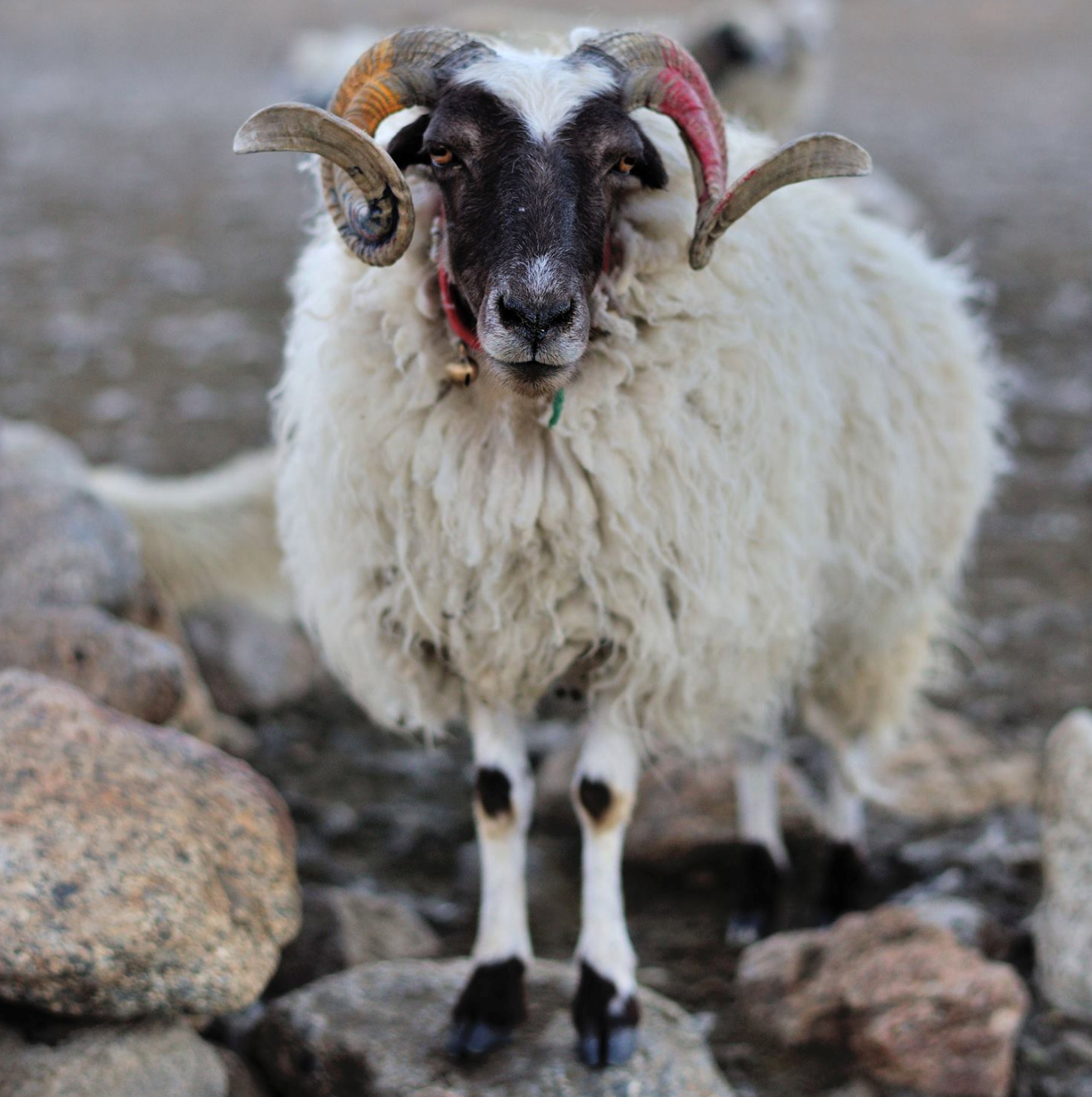Cashmere is one of the most expensive yarns in the world. This pure, high-quality material can easily cost thousands of pounds. Many people mistakenly believe that the raw material comes from sheep when, in fact, cashmere wool comes from goat fur.
The cashmere
goat
Cashmere goats live in the Himalayan mountains, one of the few places where this species still lives. They often live alongside yaks and sheep. These herds are cared for by the Changpa, a nomadic people which earns a living by producing cashmere.
There are several different breeds of cashmere goat and the most well-known breed is the Changra or Ladakh Pashmina goat. These goats provide the softest and most expensive cashmere wool which is known as pashmina. It is this raw material which is used by Tuinch.
The cashmere wool which Tuinch uses comes from the Tsu Moriri area – the ‘T’ in Tuinch is a reference to this area. It is one of the most remote areas in the Tibetan highlands and is part of the Changthang plateau.
The fur
Temperatures on the Changthang plateau can drop as low as -40°C in winter. Although most humans would not be able to survive these conditions, this is the natural climate for the nomads and the animals living here. Cashmere goats protect themselves from these cold temperatures by developing soft, woolly fibres as part of their fur.
Temperatures rise again in spring, when the cashmere goats begin to lose their coat. To collect their soft undercoat, the mountain goats are combed, rather than shaved: shepherds separate the coarse outer hairs from the fine undercoat by hand.
Cashmere hairs are usually 9 to 15 cm long. Before a garment can be created, the fibres are washed by hand and spun by the nomadic women. The fact that these processes are carried out by hand explains the wool’s high price.
Cashmere is a rare raw material: a goat produces just 150 to 200 grams of cashmere wool per year. Wool from 4 goats is therefore required to make a single jumper.
However, the Changpa people is opposed to the mass production of cashmere which exists in other countries, including China. In theory, more cashmere requires more goats, but this negatively affects the quality of the raw material. The more goats there are grazing on a single piece of land, the less grass each goat has to eat. As a result, the goats’ hair doesn’t grow as long; this results in holes in their coats which leads to lower levels of wool production. This causes a vicious circle: goats are constantly added to the herd, further reducing the quality of the raw material.
Over the years, this has led to the production of less wool per goat, resulting in increased prices.
The threat
Climate change has vast and wide-ranging effects, including on the production of pure, high-quality cashmere.
Although cold temperatures are to be expected, snow is unusual: it covers the green plains, preventing the mountain goats from grazing in sufficient quantity. Shepherds have to look for new areas for their herds but these are difficult to find and cashmere goats die of starvation as a result.
This is not the only problem caused by snowfall: the increased humidity also harms the goats’ coats.
Climate change also causes temperatures to climb higher than normal at other times. When this happens, the goats do not produce as many soft fibres to ensure that their undercoats are thinner. Thinner undercoats mean less cashmere wool.
The handmade works of art which Tuinch makes with pashmina and cashmere wool provide an opportunity to support artisanal cashmere production.







